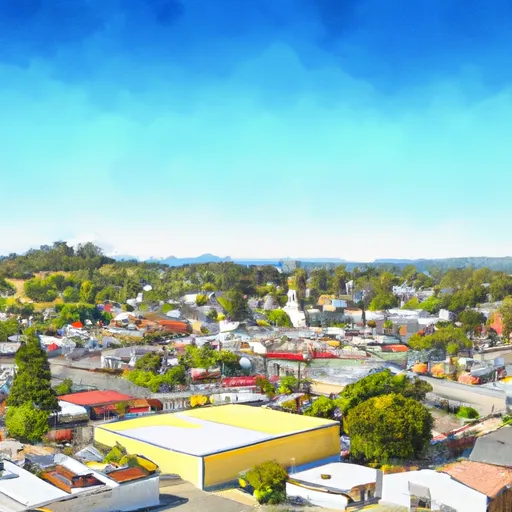-
 Snoflo Premium
Snoflo Premium
Get unlimited access to all our content
With no Ad interruptions! - Start Your Free Trial Login with existing account
Waterford
Eden Index
Climate
9.2
•
Recreation
3.1
•
Community
2.5
•
Safeguard
5.4/10

Waterford, California is a charming town located in Stanislaus County. It enjoys a Mediterranean climate characterized by hot, dry summers and cool, wet winters. Summers in Waterford are typically sunny and dry with temperatures ranging from the mid-80s to the low 100s Fahrenheit. Winters are mild and wet, with temperatures averaging in the 50s and occasional rainfall.
Waterford is nestled in the San Joaquin Valley and benefits from the hydrology constituents of the area. The town is surrounded by fertile agricultural land and is close to the Tuolumne River, providing a reliable water supply for farmers and residents alike. The river also offers recreational opportunities, such as fishing, boating, and kayaking.
In addition to the nearby river, Waterford boasts several outdoor recreation opportunities. The city has a Community Center Park equipped with picnic areas, sports fields, and playgrounds for families to enjoy. Nearby, there are hiking trails in the surrounding hills that offer stunning views of the valley. Waterford is also close to the Yosemite National Park, allowing residents and visitors to explore its breathtaking landscapes and engage in activities like camping, hiking, and wildlife spotting.
What is the Eden Index?
The Snoflo Eden Index serves as a comprehensive rating system for regions, evaluating their desirability through a holistic assessment of climate health, outdoor recreation opportunities, and natural disaster risk, acknowledging the profound impact of these factors on livability and well-being.
Climate Health Indicator (CHI): 9.2
Waterford receives approximately
369mm of rain per year,
with humidity levels near 60%
and air temperatures averaging around
17°C.
Waterford has a plant hardyness factor of
9, meaning
plants and agriculture in this region tend to thrive here all year round.
By considering the ideal temperature range, reliable water supplies, clean air, and stable seasonal rain or snowpacks, the Climate Health Indicator (CHI) underscores the significance of a healthy climate as the foundation for quality living.
A healthy climate is paramount for ensuring a high quality of life and livability in a region, fostering both physical well-being and environmental harmony. This can be characterized by ideal temperatures, reliable access to water supplies, clean air, and consistent seasonal rain or snowpacks.
Weather Forecast
Streamflow Conditions
San Joaquin
Area Rivers
San Joaquin
Snowpack Depths
San Joaquin
Reservoir Storage Capacity
San Joaquin
Groundwater Levels
Recreational Opportunity Index (ROI): 3.1
The Recreational Opportunity Index (ROI) recognizes the value of outdoor recreational options, such as parks, hiking trails, camping sites, and fishing spots, while acknowledging that climate plays a pivotal role in ensuring the comfort and consistency of these experiences.
Access to outdoor recreational opportunities, encompassing activities such as parks, hiking, camping, and fishing, is crucial for overall well-being, and the climate plays a pivotal role in enabling and enhancing these experiences, ensuring that individuals can engage in nature-based activities comfortably and consistently.
Camping Areas
| Campground | Campsites | Reservations | Toilets | Showers | Elevation |
|---|---|---|---|---|---|
| Woodward Reservoir | 155 | 219 ft | |||
| Big Oak - Glory Hole Area - New Melones Lake | 55 | 1,050 ft | |||
| Gloryhole Rec Area- Ironhorse - USBR | 300 | 1,172 ft | |||
| Frogtown RV Park | None | 1,544 ft | |||
| Turlock Lake State Rec Area | 66 | 126 ft | |||
| Modesto Reservoir | 150 | 212 ft | |||
| McConnell State Rec Area | 21 | 122 ft | |||
| Ironhorse- Glory Hole Area - New Melones Lake | 90 | 1,050 ft |
Nearby Fishing
Nearby Ski Areas
Catastrophe Safeguard Index (CSI):
The Catastrophe Safeguard Index (CSI) recognizes that natural disaster risk, encompassing floods, fires, hurricanes, and tornadoes, can drastically affect safety and the overall appeal of an area.
The level of natural disaster risk in a region significantly affects safety and the overall livability, with climate change amplifying these risks by potentially increasing the frequency and intensity of events like floods, fires, hurricanes, and tornadoes, thereby posing substantial challenges to community resilience and well-being.
Community Resilience Indicator (CRI): 2.5
The Community Resilience Indicator (CRI) recognizes that education, healthcare, and socioeconomics are crucial to the well-being of a region. The CRI acknowledges the profound impact of these elements on residents' overall quality of life. By evaluating educational resources, healthcare accessibility, and economic inclusivity, the index captures the essential aspects that contribute to a thriving community, fostering resident satisfaction, equity, and social cohesion.

